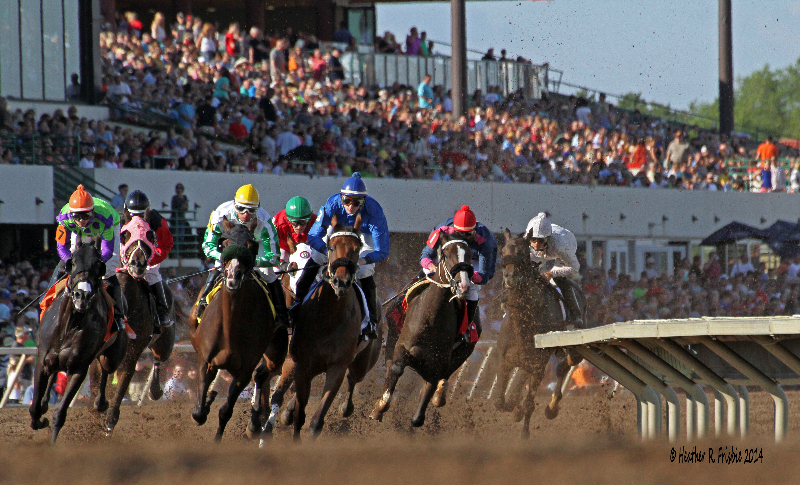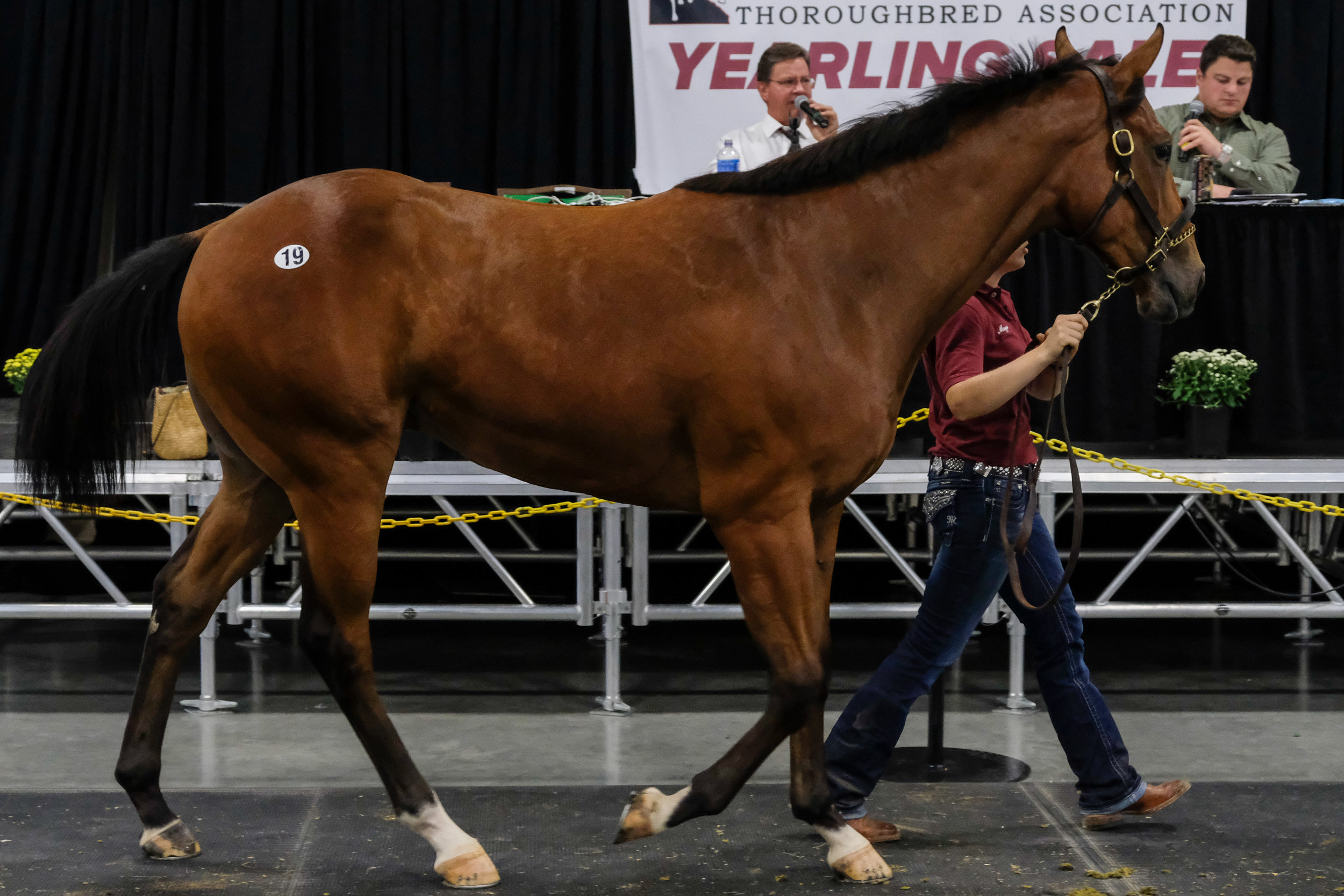Where are they now? Where are trainers, who once called Arlington Park their summer home, going?
/By Ken Snyder
In real estate, there’s an old saying that the three most important factors are location, location, location. It has become a factor in horse racing too, at least in the Midwest. For last year’s Arlington trainers, the search for the right race, however, is not to be found in a condition book but on a map. Trainers Chris Davis and Larry Rivelli are part of the involuntary exodus from the now-closed Chicago racing institution.
Five years ago, Davis, then stabled at Keeneland in Lexington, Kentucky and racing in one of the country’s toughest meets in April and October, met with his owners with what turned out to be a sound idea: move their horses to Arlington. “You have to put your horses where they can win,” he told them.
The move worked. Davis’s stable progressed to finish in the top five in earnings the past two meets at Arlington.
Today, ironically, Davis was back in Lexington this spring in the wake of Arlington’s closing, stabling again at Keeneland. If earnings are any indication, Davis is better prepared to take on the top horses and trainers at the prestigious spring and fall meets at Keeneland. Last year, his earnings surpassed $1.3 million. “The talent level in my barn is significantly higher than it was five years ago; there’s no question. And I have more liberty about where I run them.”
For Rivelli, who is moving to Hawthorne Race Course on Chicago’s south side, he was the perennial meet leader at Arlington in wins and earnings (nine straight titles through 2021). The loss of training and racing there is acute on an emotional level.
“It was a beautiful facility…like going to a birthday party every day when you ran horses and won–such a great place to be.” On a professional level, that would mean birthday candles by the gross; his 230 starters last year at Arlington won at an astonishing 37% rate.
While Davis is, again, a Chicago native and also the son of parents who trained horses for over 30 years in the “Chicagoland” area, he is going home, if not professionally then personally. (He lives in Lexington.) Rivelli is adding 30+ miles to a daily commute.
So where will other Arlington trainers go?
It is almost a certainty that some will make a move north to Canterbury Park in Shakopee, Minnesota, thanks to incentives. Arlington trainers who raced in Illinois during 2021 or this year can earn a $1,000-bonus if they race in May and if they have not raced at Canterbury previously. That $1,000 is in addition to another $1,000 paid to all trainers—Canterbury veterans included—for May starts. Bonuses are on top of any purse money earned, and the meet starts May 18.
Additionally, Canterbury is offering a travel loan program for up to $25,000 per owner or a maximum of $1,500 per horse. This is for stables shipping in from anywhere outside Minnesota. Loan and stall applications were due on April 4.
“Chicago familiarity would obviously draw more eyes to Canterbury Park’s product and hopefully increase exposure and wagering interest,” said Andrew Offerman, senior vice-president of operations at Canterbury.
For trainers, Offerman points to Canterbury’s turf course. “I think it is probably the best or as good of a turf course as you can find in the Midwest.
“If you’ve been competitive in Illinois, you should definitely be competitive in Minnesota,” he added.
Indiana Downs in Shelbyville near Indianapolis would seem to be a natural draw for Arlington trainers except for one critical factor: stalls. Chris Polzin, racing secretary, has 10 Arlington trainers coming in, but there isn’t room for more. Polzin had applications for stalls for 1,856 horses last year but only 1,150 stalls.
“The trainers we’re getting from Arlington, I think, will have a positive effect on us. If they have better horses, we can fill better races…Ingrid Mason—those kinds of people,” he said.
FanDuel Sportsbook and Horse Racing in Collinsville in southern Illinois will certainly draw trainers as well with races (and bonuses) for Illinois-breds.
Chris Davis, a Chicago native and also the son of parents who trained horses for 30 years in the ‘Chicagoland’ area, he is going home. If not professionally, but personally (he lives in Lexington)
For Davis, the biggest loss from Arlington’s closing will be felt by owners. “The majority of my clients are from the Chicago area. They had a lot of fun going out to the races. They used to come to the races, come to the barn afterward and see their horses. They were hands-on and really enjoyed being around the barn atmosphere rather than just ‘Let me know when they’re running.’
“They took enjoyment bringing friends to the barn and saying, ‘This is my horse.’”
The closing of Arlington is a mixed bag for Rivelli. Hawthorne is “not as appealing to the eye but has purses this year bigger than Arlington’s, which were pretty significantly higher than they were last year.
“We’re going to be probably with the same company running for a lot more money. So, it’s not too bad. It’s just the actual facility itself and the memories of Arlington. We already miss it, and it’s not even time to be back there yet.”
Rivelli’s decision was made for him, in part, by his barn help. “We wouldn’t have a problem going anywhere. It’s just that I’ve got help that’s been with me for 20 years. You hate to uproot them from their families and their houses and where they live; and everything gets to be tougher now.
“I’m fortunate to have great help. We’ve been together a long time, and that’s a big part of our success.”
With change being the one constant in life, Offerman thinks the closing of Arlington may not be the last major event to happen in the Midwest racing scene in the near future. “We have to see what happens in Chicago’s marketplace, what happens with their [Hawthorne’s] casino build-out, and what Hawthorne winds up doing,” he said. Included, too, in all the possible scenarios, is another racetrack being built in Chicago, according to Rivelli.
The one given that all parties agree on is that Arlington is irreplaceable.
“The grandstand itself is on par with any in the world, not just in the U.S.,” said Davis.
Hawthorne Racecourse has increased purses, a larger horse population and the return of a spring stakes schedule this year
The recent announcement that Churchill Downs will host the “Arlington Million” in a special one-day event on August 13 this year is met with subdued interest by Davis. “It would be like moving the Santa Anita Derby to Gulfstream. It wouldn’t be the same kind of race,” he said.
As for Arlington as a whole, he imagines how hometown Louisville trainers like Greg Foley, Brad Cox and Dale Romans would feel if Churchill Downs shut down. “It is absolutely a blow,” he said.
A long-held personal goal for Davis was to win the Arlington Million. He admits, however, he’d still love to win it, even at Churchill Downs.
The big winner in the Arlington closing is horse-van operators. Davis has plans to send some horses this year to Ellis Park for their summer meet, Churchill Downs (“if they’re good enough to run there”), and Indiana Downs.
Davis sees a similarity between Keeneland and a location on the mid-Atlantic racing circuit where trainers in, say, Maryland can pick and choose races at Laurel, Penn National, Charlestown, Mountaineer, and as far north as Monmouth. “With the money getting as good as it is in Kentucky and the option of running at multiple tracks within an hour, two hours, three hours, away, it’s a big draw for the Midwest. You have the option to pick your races and cherry-pick the best spots. You’re not just tied to the toughest of the tough.”
He also will leave horses in South Florida, where he has been based this winter.
Rivelli, too, has a small string earmarked for Keeneland this April. “I have 10 stalls there, and I’ll ship back and forth. It’s only a four-hour ship back to Hawthorne.”
Also based in South Florida in the winter, like Davis, Rivelli shipped some horses from there to Kentucky in March to get them acclimated to an unpredictable climate, much different from the high temperatures and humidity of South Florida.
It gets more complicated for Rivelli compared to Davis, due to Hawthorne closing after June 25 and not reopening until September 23. He will base operations at various times during the shutdown at Colonial Downs in Kent, Virginia; Churchill Downs; and Ellis Park in Henderson, Kentucky.
A rendering of what Hawthorne Racecourse will look like after the development project is complete
Staying at home at Hawthorne for Rivelli, even with the shutdown, has its advantages. “The purses at Hawthorne are bigger than Indiana, and the competition is going to be less. I’m not too proud to run at Hawthorne for $50,000 purses—believe me.”
Rivelli probably has the most reason for optimism given his domination at Arlington.
“We breed a lot of Illinois-breds so we have bonuses. We should be ok,” he said, perhaps understanding things considerably.
There’s no question that going from The Bart—immortalized in a statue with John Henry at Million—to the Bears—Chicago’s woeful NFL team who bought Arlington—is a bitter pill to swallow for all in racing.
The only upside at racetracks from Minnesota to Kentucky to Florida will be barns better stocked with horses who normally would be at Arlington. But racing in the Midwest, and really everywhere in this country, won’t be the same.







